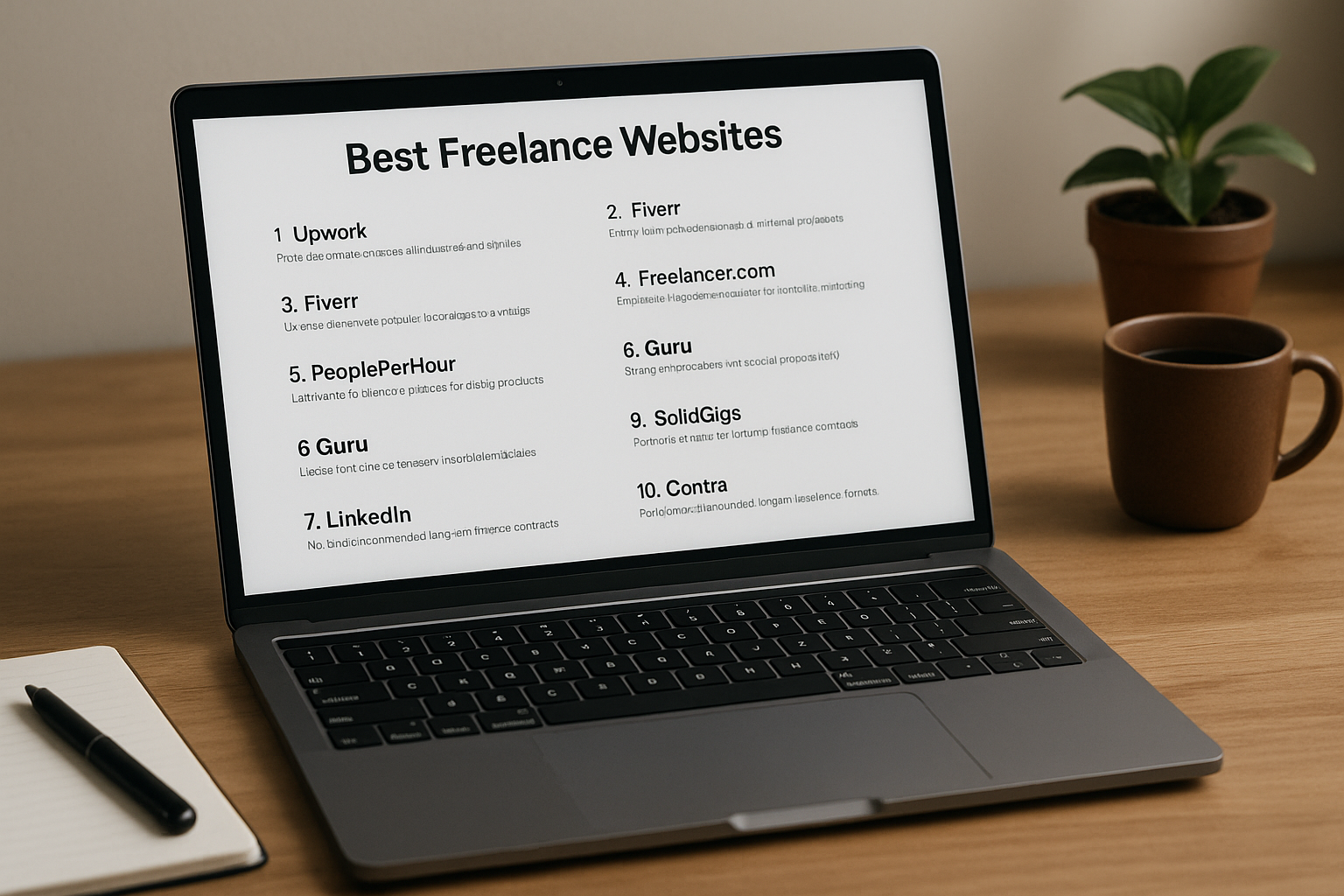One of the first challenges every freelancer faces is finding clients. Fortunately, there are many platforms designed to connect freelancers with individuals and businesses looking for their services. Whether you’re just starting out or have years of experience, the right freelance website can open the door to steady work and reliable income. In this article, we’ll review the best freelance platforms to find work in 2025—covering their features, pros, cons, and which types of freelancers they serve best.
1. Upwork
Best for: Freelancers across all industries (writing, design, development, marketing, etc.)
Upwork is one of the largest and most trusted freelancing platforms in the world. It allows freelancers to create profiles, apply to jobs, and work with clients from around the globe.
Pros:
- Wide range of job categories
- Trusted by big clients like Microsoft and Airbnb
- Built-in time tracker and payment protection
Cons:
- High competition, especially for beginners
- Service fees start at 20% for new clients
- Takes time to build reputation and client trust
2. Fiverr
Best for: Creative professionals and service packages (gigs)
Fiverr allows freelancers to create “gigs” (pre-packaged services) starting at $5, though most professionals charge much more. It’s ideal for designers, writers, video editors, voice-over artists, and digital marketers.
Pros:
- Easy to get started
- You set your own prices
- Great for building passive offers
Cons:
- Fiverr takes 20% commission
- You need to market your gigs to get visibility
- Some clients expect quick turnaround for low pay
3. Freelancer.com
Best for: Entry-level freelancers and international projects
Freelancer.com is a global platform that connects employers and freelancers across many job categories, from programming and design to writing and marketing.
Pros:
- Variety of job listings
- Free to join
- Contests let you showcase your work
Cons:
- Limited free bids per month
- Many low-paying projects
- Fees apply for both free and paid accounts
4. Toptal
Best for: Experienced freelancers in tech, finance, and design
Toptal (Top Talent) is an exclusive platform that only accepts the top 3% of freelancers. It’s known for offering high-paying jobs with reputable companies.
Pros:
- High-quality clients and projects
- Excellent earnings potential
- No bidding—Toptal matches you with clients
Cons:
- Requires passing a strict screening process
- Not suitable for beginners
- Limited to select categories (developers, designers, finance experts, etc.)
5. PeoplePerHour
Best for: Freelancers in the UK and Europe
PeoplePerHour is a freelance platform that focuses on the UK and European markets, though it’s available globally. Freelancers post hourly or project-based services.
Pros:
- Local and international jobs
- Built-in project management tools
- Hourly rate protection
Cons:
- Service fees apply
- Fewer jobs compared to larger platforms
- Approval to post services can take time
6. Guru
Best for: Mid-level freelancers in technical, creative, or business roles
Guru has been around since 1998 and offers a wide range of freelance categories. It features a workroom for easy project communication and collaboration.
Pros:
- Flexible payment options (hourly, milestone, or recurring)
- Lower service fee than Upwork (9% on average)
- Easy invoice creation
Cons:
- Less traffic than Fiverr or Upwork
- Interface is a bit outdated
- Some categories are less active
7. Workana
Best for: Latin American freelancers
Workana is a leading platform in Latin America that connects freelancers with companies in Spanish and Portuguese-speaking markets.
Pros:
- Strong presence in Latin America
- Great for Spanish- and Portuguese-speaking freelancers
- Clean, user-friendly interface
Cons:
- Lower average project budgets
- Most clients require regional language proficiency
8. SolidGigs
Best for: Freelancers who want curated job leads
Instead of hosting a job marketplace, SolidGigs sends you handpicked job leads via email each week. It saves time by curating the best freelance opportunities from multiple sources.
Pros:
- Saves hours on job hunting
- Includes training resources and tools
- Great for busy professionals
Cons:
- Requires a monthly subscription
- You still have to pitch clients manually
9. Contra
Best for: Portfolio-driven freelancers in creative fields
Contra offers a visually appealing platform where freelancers create modern profiles and showcase their work. It charges no commission fees, which is ideal for growing your income.
Pros:
- No platform fees
- Modern interface
- Portfolio-style profile helps attract clients
Cons:
- Still growing—fewer jobs than established sites
- Works best for creatives like designers, writers, and marketers
10. LinkedIn
Best for: Networking and high-quality, long-term freelance contracts
LinkedIn is not a traditional freelance platform, but it’s a powerful tool for finding freelance work. Clients often post freelance opportunities and message freelancers directly.
Pros:
- Professional credibility
- You can be discovered passively
- Great for building long-term relationships
Cons:
- You must actively build your network
- No built-in payment or project management system
Tips for Succeeding on Freelance Platforms
- Optimize your profile with a professional photo, detailed description, and portfolio
- Always tailor your proposals to the specific job
- Focus on client satisfaction and ask for reviews
- Avoid underpricing—charge what you’re worth
- Keep applying consistently and don’t get discouraged
Final Thoughts: Choose the Platform That Suits You Best
There’s no one-size-fits-all answer. The best freelance platform for you depends on your:
- Skill level
- Industry
- Language
- Income goals
- Work style
Try out a few and see where you get the best results. With consistency and professionalism, any of these platforms can help you build a successful freelance career.

